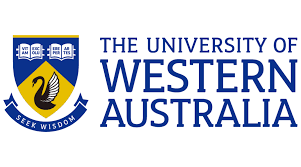University of Western Australia: Scientists develop fish-friendly measuring tool
An international team of scientists including researchers from The University of Western Australia and Institute of Zoology in London has pioneered a ground-breaking new ‘non-lethal’ way to count fish in the open ocean, which it’s hoped will be used for conservation and ecosystem restoration.
The scientists successfully combined existing acoustic and video technology to measure 33 million tonnes of fish in part of the tropical Marine Protected Area of the British Indian Ocean Territory, recording the abundance and size of 12,335 individual fish including tuna, dolphinfish and sailfish.
In a research paper published in Ecosystems, the experts said they used echo-sounders to record the acoustic ‘pings’ of fish from across the 3,000 sqkm survey area along with visual data from 546 deployments of baited remote underwater video systems (BRUVS) to measure the biomass of fish.
Study co-author and Director of the Marine Future Lab at UWA, Professor Jessica Meeuwig, said fish biomass (calculated by multiplying the total number of fish by individual weight) was important information for marine scientists and the combination of the two non-lethal methods would be ideal for measuring species of conservation concern.
“Measuring biomass fluctuations across years helps to monitor and understand species and ecosystems responses to stressors such as climate change and fishing,” Professor Meeuwig said.
“While an accurate picture of life in our seas is essential in understanding how to protect and conserve marine species and ecosystems, the vast and remote nature of the open ocean and the diversity of fish has made measuring free roaming species a difficult task in the past.
“The successful combination of these two methods means we can harness the large-scale sampling of acoustic methods with the imagery of BRUVS allowing fish to be identified and measured without harming them, which has significant benefits.”
Professor Meeuwig said there was an increasing requirement for non-lethal research in the ocean and it was hoped that this combined technique could be scaled up and used across fisheries, other marine parks and the open ocean, across the globe.
Information captured during the research project will be used to improve conservation and ecosystem restoration across the Chagos Archipelago which lies within the British Indian Ocean territory and has a huge abundance of marine species.

